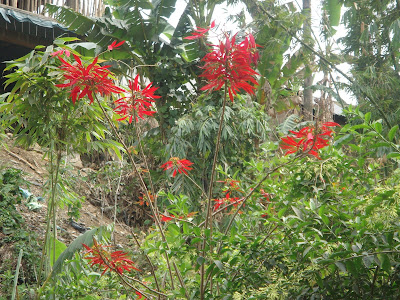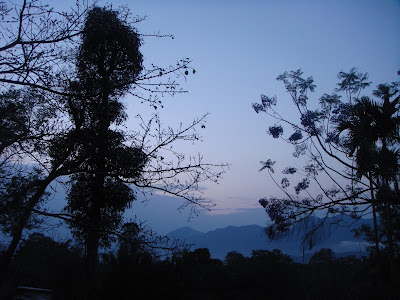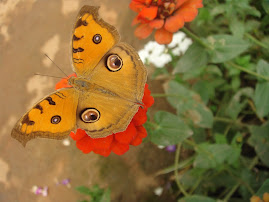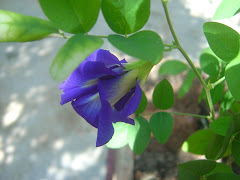
In full bloom in early April was this Night Blooming Jasmine.
This photo was taken in the hospital grounds at Haflong. The
fragrance was intoxicating and I suppose no garden should be
without this lovely plant.
Cestrum nocturnum is also known as Raat ki Rani in our country.
It means "Queen of the Night". And rightly so. For its fragrance
is wonderful and the surrounding area is filled with it. The
flowers are small and cream-coloured and are in clusters. The
shrub produces three or four flushes of flowers in a year,
lasting for about two weeks or so.

After the night's rain...amazing that without the fragrance,
the blooms seem less spectacular.

In my mother's garden, the Tej Patta was in full bloom. The
name I've used is in Hindi. The botanical name is Cinnamomum
tamala/Cinnamomum tejpatta. The tree is medium-sized and the
tough leaves are three-veined. The leaves are aromatic and
used in a lot of Indian dishes. For us, a kitchen without
tej-patta would be incomplete. It is often referred to as
the Indian bay leaf.
The following is the information I got from Wikipedia.
Cinnamomum is a genus of evergreen trees and shrubs belonging
to the Laurel family, Lauraceae. The species of cinnamomum have
aromatic oils in their leaves and bark. The genus contains 300
species distributed in tropical and sub-tropical areas around
the world. The etymology is derived from the Greek word
"kinnamomon' meaning spice.
Although Tej patta is called the Indian bay leaf, it is different
from the one used in Mediterranean/Western cooking. Tej patta has
a flavour that reminds you of cinnamon. The leaves of the Bay Laurel/
Laurus nobilis, also extensively used in soups, stews, and other
dishes, has a milder flavour.
















































































.jpg)
































